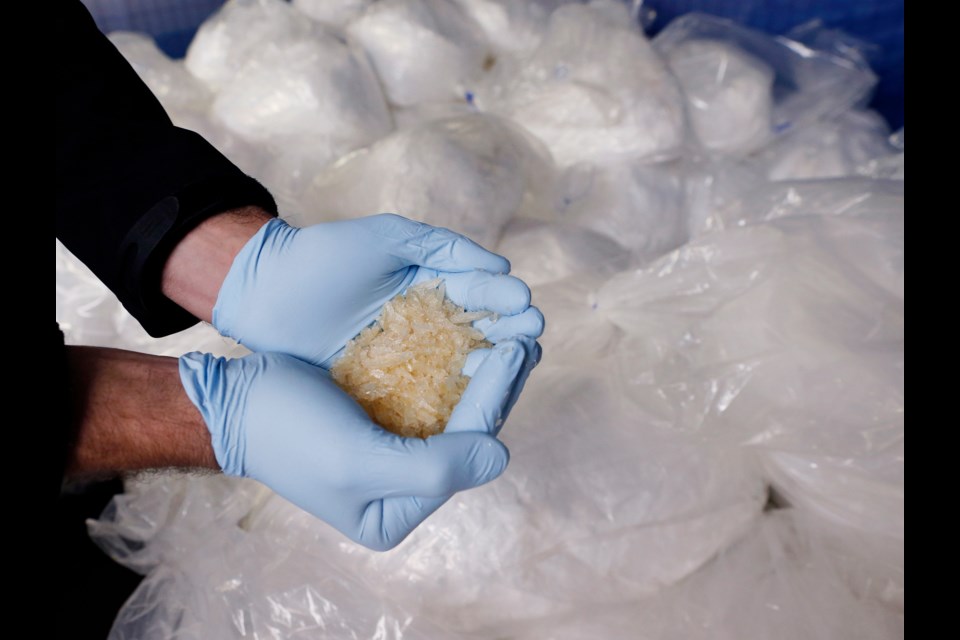Nature, science, business, and human need are four potential answers about where crystal methamphetamine comes from and why people use the harmful drug, according to a Moose Jaw health promotion practitioner.
“Knowing the answer to such a complicated question is not in order to assign blame, but rather to help us understand how we arrived where we are … ,” said Rom Jukes with the Moose Jaw Family Wellness Centre. “For our future to be an improvement of the present, reflection is valuable. Our past has, for multiple reasons, resulted in millions worldwide using crystal meth to their own destruction.”
While criminals are one reason crystal meth is available, crime is a consequence rather than the source. Addressing the criminal elements is necessary but not sufficient to help people suffering, he continued. Criminals did not invent methamphetamines, nor did they introduce them to the world on a mass scale. Instead, the drug was introduced through mainstream channels over the centuries.
Working on behalf of the Moose Jaw Crystal Meth Strategy Committee, Jukes recently put together a report looking at the history of crystal meth and where it originated.
Nature
The natural world is the first place to look when considering the genesis of crystal meth, Jukes said. Flowers such as Khat in Africa, Coca in South America, or the Betel nut in India have been used by local cultures in traditional medicines and recreational use for centuries. However, this drug is ultimately derived from the shrub Ephedra, which is common across Central Asia.
“The Western European world was late to the game in cultivation and usage of natural stimulants. Few people were exposed to these substances until expanding trade routes brought exotic items like tea and coffee into their experience,” he continued.
Science
In 1662, English physician Henry Stubbe published The Indian Nectar, where he declared that chocolate “Doth more speedily and readily refresh and invigorate the bodily strength more than any other sustenance whatever.”
Jukes pointed out that books such as Stubbe’s applied the emerging Enlightenment scientific worldview onto the natural world. Stubbe also hoped to express the medical value of chocolate while distinguishing fact from fiction.
“In a European world increasingly committed to the overthrow of dogmatic assumption, these new substances from across the world were yet another frontier of exploration,” Jukes said. Europeans also began looking more at pure cocaine, which they isolated and extracted from coca leaves in 1860.
Business
By the 1880s, products such as Coca-Cola flooded the market and were advertised as “valuable brain tonic” and an “intellectual beverage.” Scientists created methyl-amphetamine from the plant base ephedrine in 1919, which became a commercial product by the 1930s.
German pharmaceutical company Temmler later began selling Pervitin, which was a patented product designed to compete with the new amphetamine product Dexedrine in America.
“The initial response to these innovations was overwhelmingly positive. Mass distribution of drugs like Pervitin began for soldiers, manufacturing workers, students, and artists,” Jukes said, noting that prescriptions of methamphetamines in the United States peaked at 31 million in 1967 since doctors were attempting to treat conditions such as depression and obesity.
Human need
Many people can feel disconnected from where they are and where they want to be and can feel dislocated emotionally and socially, he continued.
During 2015-16 in the U.S., the most common prescription for 11.4 per cent of adults aged 20 to 59 was anti-depressants, and for 6.2 per cent of adolescents aged 12 to 19 it was central nervous system stimulants.
Fundamental to substance abuse is the need of the person, said Jukes. Last year a United Nations agency reported that roughly 269 million people worldwide used illicit drugs in 2018, while more than 35 million met the criteria for having a drug use disorder. For most of these people, this does not escalate into a debilitating disorder but does for a disproportionate number of meth users.
Two years ago, the total number of U.S. adults reporting meth use (0.5 per cent) was comparable to non-medical pharmaceutical users (0.6 per cent) — but 38 per cent of people reported being daily or near-daily users of meth compared to seven per cent of non-medical pharmaceutical users.
“Methamphetamine may be started by a person to meet a particular need, but it quickly becomes the only answer to every problem … ,” added Jukes. “We likely will not find our answer (about where crystal meth came from) like a set of lost car keys, but every complicated problem is asking for a creative solution.”




